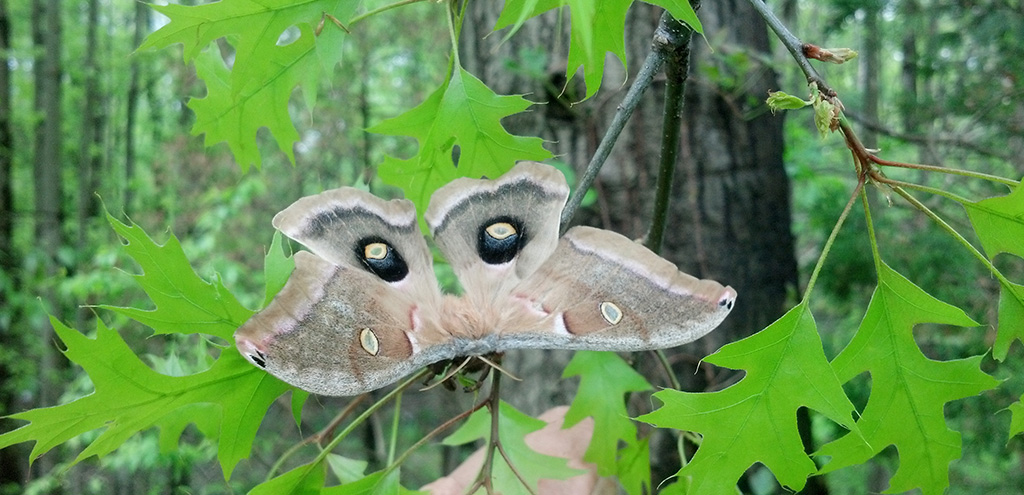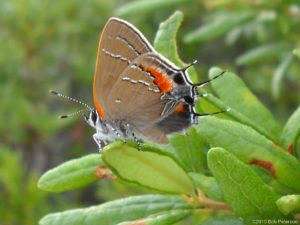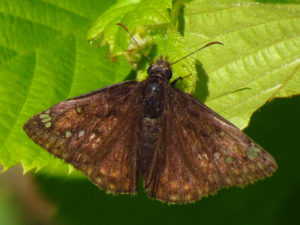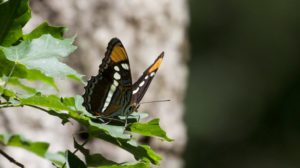THE LEAFLET

Plant an Oak for Pollinator Week
Birds and insects that carry pollen from plant to plant are called pollinators. Pollinators, both native (native bees, flies, wasps, hummingbirds, etc.) and non-native (honeybees) provide an essential service to our lives and ecosystems. Not only do they provide us with one-third of the food we eat through the reproduction of flowering plants and their seeds, but they also keep our flowering plants going in our natural world.

Southern Oak Hairstreak (Satyrium favonius) on scrub oak. Photo courtesy Bob Peterson.
As modern landscapes change, however, pollinators fight to survive, and they need our help. Helping out pollinators is easy. You’re probably envisioning colorful flowers bursting with blooms, but did you know trees are just as critical for pollinators and actually support an even greater diversity of butterflies and moths than herbaceous plants?
There’s one tree in particular that supports over 500 different kinds of lepidoptera (moths and butterflies). Native oak trees support pollinators throughout the year in a number of ways, but especially by providing winter shelter and habitat.
Pollinator Week is not just the perfect time to consider an oak. Earlier this year, Washington Post columnist Adrian Higgins waxed poetic about how planting an oak is a symbolic and powerful way to mark these troubled times we’ve been living through for the past year and half. “As it grows, it will be a reminder of the time the world shut down and of those who died in the pandemic. A young tree, vigorous, aiming for the stars, also allows us to look forward and to share in its vitality.” Oaks are strong, steadfast, and unmatched in terms of biological riches.

Juvenal’s Duskywing (Erynnis juvenalis) lays eggs on a variety of oaks. Photo courtesy D. Gordon E. Robertson.
While flower nectar is thought of as the highest prize for pollinators, trees, especially oak trees, offer another gift to many pollinators: their leaves. Where monarch butterflies eat primarily milkweed leaves, many other species are dependent on tree leaves for their early stages of development. Oak trees also provide safe and dependable habitat spaces for pollinators as well as most of the first available food in the spring.
This genus of trees is not only prized by moths and butterflies, but they’ve long been prized by humans for their shade, beauty, and lumber. We have a ridiculous amount of oaks available through RiverSmart Homes or our Tree Rebate program including DC’s official tree, the scarlet oak, the tough swamp white oak, the willow oak with its unusual leaves, the dense northern red oak, or the towering and abundant pin oak.

The California sister (Adelpha californica) uses many oaks but prefers the canyon live oak. Photo courtesy of Harmony on Planet Earth.
DC is a welcoming place for so many people, let’s make it welcoming for pollinators! By planting and protecting our native trees, especially oaks, we can make a great habitat for all.
Top image of a Polyphemus Moth on Pin Oak Tree, courtesy of Nature Into Action.